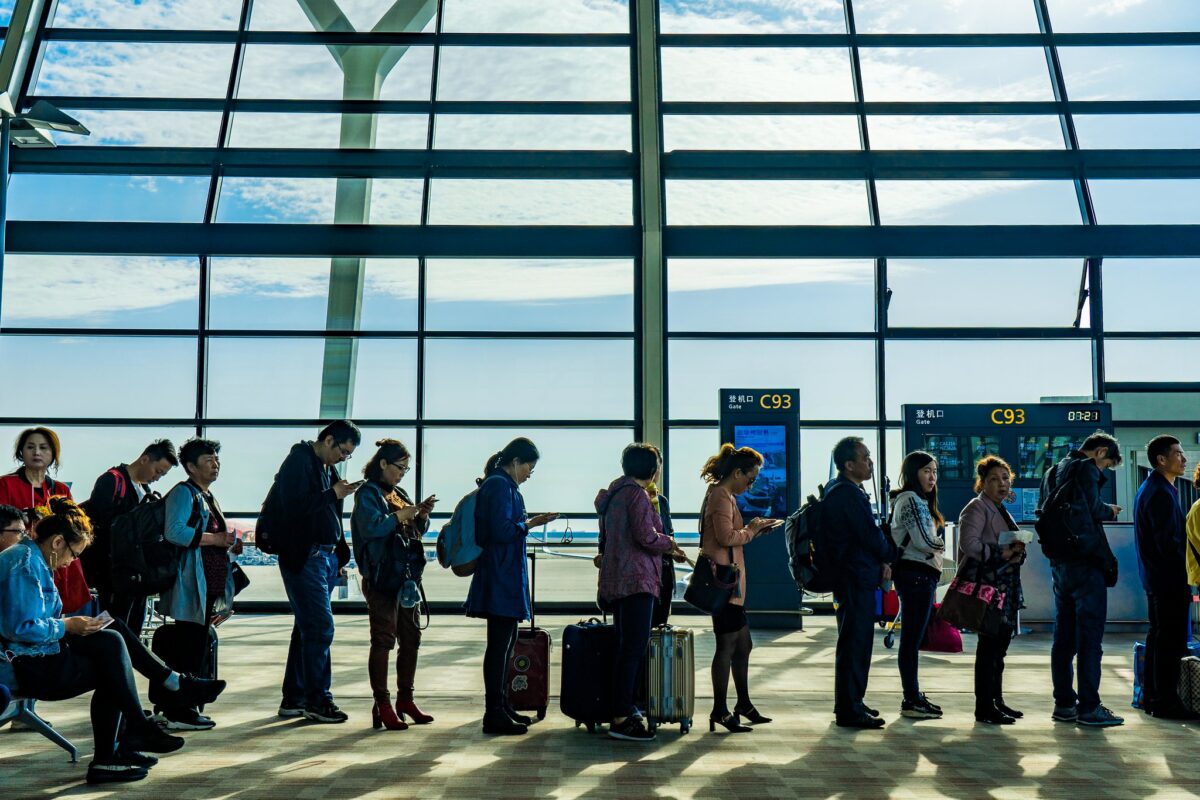Skift Take
Pent-up demand for international travel seems unstoppable as tourists refuse to slow down regardless of the travel industry's ongoing anxiety concerning rising prices.
Amid ongoing predictions for intense inflation this summer, travelers are still planning to spend more on travel this year than they did during pre-pandemic times, according to a new report by Skyscanner. The trends report released Tuesday reveals changes in booking demand and behavior amongst global travelers that could help forge the recovery of international travel and aviation in 2022.
“Despite challenging headwinds, the aviation industry continues to prove its resilience, driven by considerable traveler demand across all regions.” said Hugh Aitken, vice president of flights at Skyscanner, in the report. “In the immediate term, there’s clear demand for domestic and short-haul travel, with long haul’s recovery on the horizon. We’re seeing positive signals that seasonality is returning in both booking horizons and trip lengths, providing a degree of certainty going forward.”
The report states that even “faced with a rising cost of living, travelers are planning to spend more this year — their budgets are higher, they’re booking longer trips and spending more on accommodation.”
A staggering 86 percent of survey respondents said that they plan to spend at least the same or even more on international travel than they did in 2019, with half of that number planning to spend more. Respondents from the US alone echo that ratio — 76 percent of travelers said that they plan to spend the same or more on international travel than they did three years ago, and 43 percent said they are planning to spend more.
Not only are travelers looking to spend more on travel as a whole, but they are also making adjustments to the way they are traveling. Of the respondents that said they would spend more in 2022, 48 percent are dedicating their increased spend towards longer trips. For some, the shift in travel behavior depends on where the travelers choose to travel — for Australians, many holiday destinations tend to be farther away, hence the popularity of longer trips.
In 2019, 35 percent of travelers were planning and booking trips at least 90 days or more before departure. While the amount of these trips have decreased in volume, the 30-59 day and 60-89 day segments for booking horizons have increased significantly, at a 24 percent and 38 percent increase.
Amongst all respondents, Asian-Pacific travelers showed the highest level of enthusiasm for booking trips in advance. As the tourism markets in Australia, India, Thailand, Vietnam and Indonesia reopen, all longer booking horizons segments observed a sudden surge in demand: the 90 days or longer segment rose by 55 percent, 60-89 days increased by 80 percent, and 30-59 days rose by 43 percent over the specified period. This is a surprising comparison to the overall average bookings horizons of 60-89 days and 90 days or more, both of which remain below pre-pandemic levels. People are clearly excited about being able to travel again, and are jumping at the opportunity as soon as they are able.
In addition, loosened travel regulations in 2022 means that seasonality is starting to play a serious role in travel decision making, with growing demand for longer holidays during key summer and winter periods. Naturally, the longer lengths tend to peak in July and December, especially trips that range from two weeks to a month and longer than a month.
Aside from extended trips, 43 percent of respondents who said they would spend more on travel this year said the money would go towards accommodation upgrades. For many travelers, the answer to this question depends on the country of origin. People from the UK and Germany want to focus on upgraded accommodations and pricier destinations, while U.S. travelers are willing to settle with cabin class and rooms. American travelers are instead way more likely to dedicate their spend to sustainable alternatives, such as carbon offsetting — over half of respondents from the US said that they wanted to spend more on sustainable upgrades.

While this is a significant jump from the average of 28 percent from overall respondents, this concern for greener travel is not far from what the travel industry is hoping to change in future traveling behavior.
“A focus on more sustainable aircraft, new route options and safety will ensure we see continued growth and the resumption of a strong travel industry,” said Marco Navarria, global marketing director for CAPA-Center for Aviation, in the report.
Travelers from the U.S. have shown the highest level of commitment to sustainable traveling than any other country, according to the report, with 25 percent of Americans planning to take an eco-conscious trip in 2022. Australian, German, and UK respondents listed relaxation and bucket list experiences as what they are looking forward to most. Americans, on the other hand, showed interest towards a wider variety of trips — remote adventures, eco-conscious travel and adrenaline-fueled were especially popular responses.
CORRECTION: An earlier version of this story incorrectly stated statistics on length of stays and was revised to reference booking horizons.
The Daily Newsletter
Our daily coverage of the global travel industry. Written by editors and analysts from across Skift’s brands.
Have a confidential tip for Skift? Get in touch
Tags: australia, aviation, climate change, coronavirus recovery, European summer travel, european travel, inflation, international travel, seasonality, summer, summer travel, Summer Travel Demand, sustainability, tourism, U.S. travel demand
